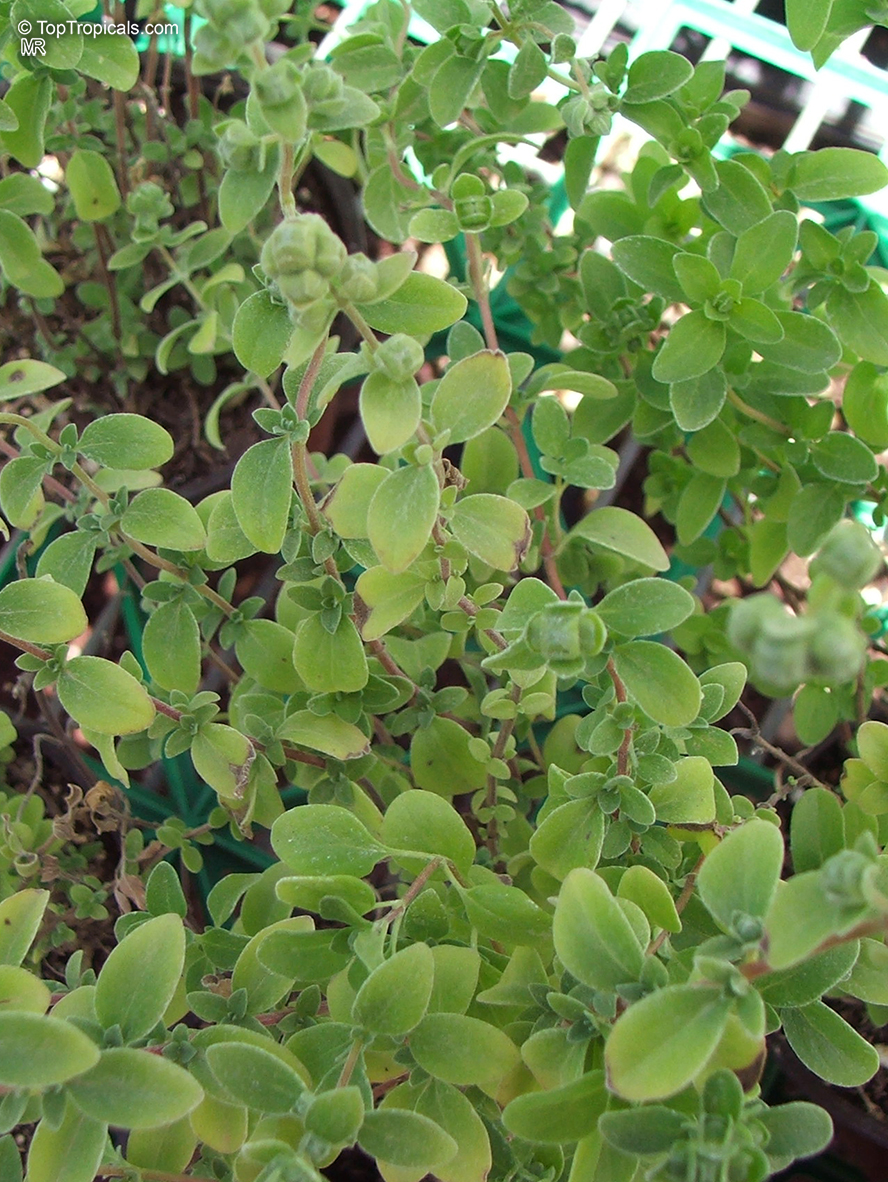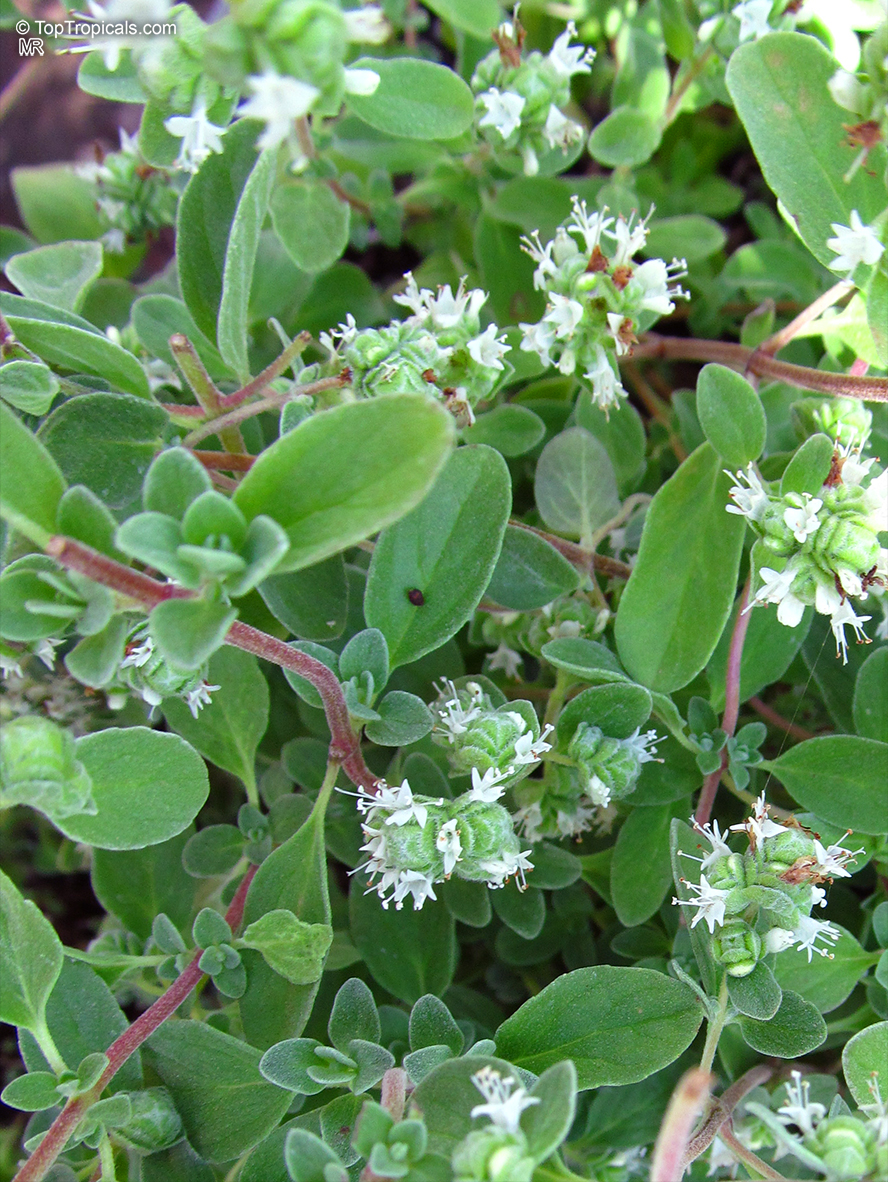Origanum majorana (Sweet Marjoram)
Top Tropicals Plant Encyclopedia
Botanical name: Origanum majorana
Common names: Sweet Marjoram, Knotted Marjoram
Family: Lamiaceae
Origin: Mediterranean






Sweet marjoram is a bushy half-hardy perennial sub-shrub that is often grown as an annual. Origanum majorana is multi-branched stems that spill over to create a mound. Since the stems take root where they touch the soil, the mound gradually increases in diameter. If grown in a hanging basket, the stems form a a cascade of attractive gray-green foliage. Sweet marjoram's oval leaves are soft and fuzzy. The leaves have a wonderful, very distinctive, perfumy fragrance when bruised. The flowers are tiny and arranged in burrlike heads. Sweet marjoram does best in a well-drained, slightly limey soil. Prefers full to nearly full sun. In the hottest part of summer, it should be given more shade. It likes a well-drained soil and frequent watering. Sweet marjoram is frost-tender. Propagation: It's easy to grow sweet marjoram from seed, but it's better to start it from cuttings. The flavor combines well in salads, in soups, sauces, fish, meats, and tomato slices. The flowers dry well for decorative arrangements or potpourri. Makes an effective home insect repellant. Often used in herbal sleep pillows. Marjoram makes a fragrant bath herb.

